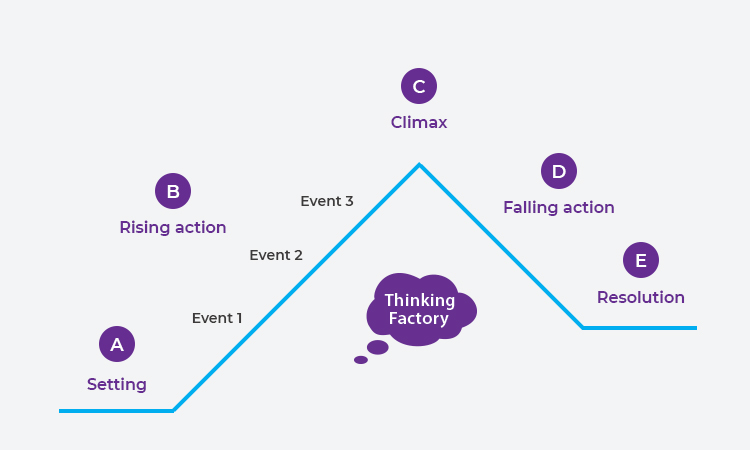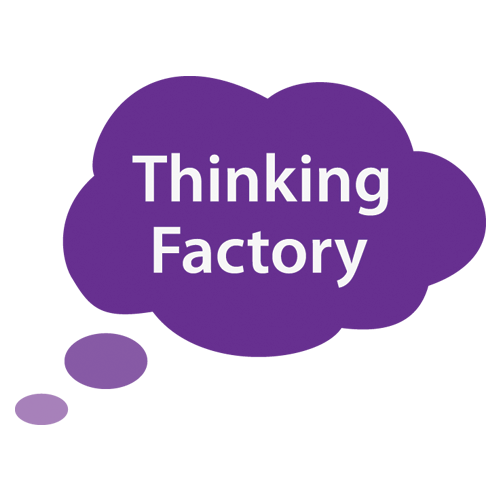As you transit from Primary 6 to Secondary 1, you will continue to write narrative essays. While the basics of narrative writing remain (e.g. having a good plot, using interesting vocabulary), you need to polish up your writing skills. This post will address some essentials to have when writing the narrative essay at secondary level.
All of us love a good story, but how many of us can tell a good story? Think about the last time you heard an engaging story. What made it so entertaining or what was so intriguing about it? Writing a compelling story is no mean feat, but there are tips and tricks that can get you off to a good start. In this post, we will highlight the ingredients of a good story.
How to write a compelling story?
1. Plotting the curve
The first step to crafting a good story is planning it on a story curve. Most stories follow the diagram below:

| (A) Introducing the setting – characters (who), time (when), place (where), conflict (what) |
| (B) Building tension – with at least 3 tension points (events) |
| (C) Dramatising the climax |
| (D) Bringing story to a close |
| (E) Reflecting on the experience |
1.1 Essay question example highlighting aspects (B) and (C)
Write about a time you struggled with how other people saw you. How did you overcome it?
1.1.1 Building tensions (B)
After setting the scene and introducing the conflict (e.g. something embarrassing you did), you build tension by showing how things got worse and more complicated.
- People started gossiping and spreading word about your blunder. [Event 1]
- You became very self-conscious and withdrawn. [Event 2]
- You started distancing yourself from your friends and slipped into emotional despair. [Event 3]
Your events (tension points) need to show an escalation of the situation.
1.1.2 Dramatising the climax (C)
This is the point where all the tension points explode into an emergency or things are at its most intense and dramatic.
- There is a heated argument and you shut all your well-meaning friends out of your life.
- You experience an emotional breakdown.
Building tension towards the climax is made effective with the use of vivid descriptions of speech, body language, and facial expressions, which we will delve into in the next tip #2.
2. Using vivid descriptions
Even with a good plot, you will need to spice up your story.This is achieved through showing and not telling; using vivid descriptions by describing characters’ speech, actions and appearance, among others. Painting a vivid picture of the situation almost always draws your reader in, as if the drama was unfolding before their eyes.
2.1 Using captivating speech/dialogue
“What kind of A-Team player are you?” Nina scoffed.
“I…I was tired. I really didn’t see the ball.”
“Wow, such a convincing reason for losing the match. You’re such a poser!” Rahim jeered.
“Yeah, Poser Aditya.” Another boy chimed in.
This series of dialogue intensifies the humiliation faced by the narrator, as the people around her lap on one sarcastic remark after another, mercilessly. Use dialogue to show contempt, anger or discouragement — it usually helps your reader picture the scenario and the tone in which the characters are speaking.
2.2 Describing actions and appearance
Use interesting adjectives and adverbs and precise verbs to lend more action and impact. Look at the table below to see how you can turn ordinary descriptions into more engaging ones.
| Bad | Good |
| The ball bounced straight to the wing attacker. | The ball rebounded off my forearm, to my dismay, and straight into the hands of the other team’s wing attacker who shot me a menacing grin. |
| I rushed towards her but she swiftly avoided me and threw the ball to her team’s goal shooter. | Horrified, I dived towards her, but she dodged to the side and passed the ball deftly to her team’s goal shooter. |
| The scoreboard showed 8:9. I was crushed and could not bear the cheers from the crowd. | The blazing scoreboard mocked me: 8:9. The roar of the crowd was suffocating. (*Note: The first sentence uses personification to make the narrator’s shame and disappointment all the more stark.) |
3. Writing a reflective ending
Bring your story to a close by writing a conclusion that reflects the lessons learnt from the conflict. This helps the reader make sense of what happened. While an emotional or action-packed story might have kept readers engaged, a good story should add to their wisdom and knowledge of the world (eg. human behaviour and moral values).
After that incident, I realised that I was too preoccupied with what people thought of me. Instead of learning from and making up for my mistakes, I had wallowed in self-pity and allowed the event to consume me and my self-worth. One mistake does not define me nor cancel all the efforts that I have put in to become the athlete I am today. Instead of worrying about living up to others’ expectations, I have resolved to keep trying my best and listen to the voices of friends who truly know me.
We have discussed three essentials in a good story: plotting a story curve (paying attention to building tension and dramatising climax), using vivid descriptions and writing a reflective ending. If you are fond of writing the narrative essay and want to become better at it, start honing your skills in these three areas. To deep dive into some of these skills, check out these posts:
- Lower secondary Writing Series 1 – E02: Narrative writing
- Lower secondary Writing Series 1 – E02: Narrative writing practice
- Secondary 1 English: An introduction on how to create interesting characters
Extracts taken/adapted from: Present Perfect 2020 Issue 1
Check the other articles from this section
- Tackling the Situational Essay: Using persuasive speech techniques
- How to write a good Situational Essay: Analyse, Amplify and Apply the appropriate tone
- Lower secondary Writing Series 1 – E02: Narrative writing (or how to write good essays)
- Lower secondary Writing Series 1 – E02: Narrative writing practice
- Lower secondary Writing Series 1 – E03: Expository writing
- Lower secondary Writing Series 1 – E01: How to analyse essay questions
- Lower secondary Writing Series 1 – E04: Hybrid writing
- Taking the Leap from Primary to Secondary English with Confidence!
- Secondary English Paper 1 components: Diagnosing your strengths and weaknesses
- Lower secondary Writing Series 1 – E05: Avoiding writing pitfalls
- From primary to secondary English: What’s new and challenging?
- Post-Exam Reality Check in 3Rs
- Tackling the Situational Essay (Part 3): Making Your Feature Article an Engaging Read
- Sec 2: 5 tips to help you write great English expository essays
- 3 tips for tackling the summary Question
- Discursive essay: Writing a well-developed body Paragraph
- A Sneak Preview of the Secondary English Writing in the Sec 2 class
- Secondary 2 English – Editing through clue-finding
- Secondary 1 English: An introduction on how to create interesting characters
Don’t Miss Any Future Post!
2024 Bukit Timah Branch Secondary English Tuition Timetable
| Level | Class Type | Day | Time |
|---|---|---|---|
| S1 | All Components Class | SAT | 5 pm to 7 pm |

